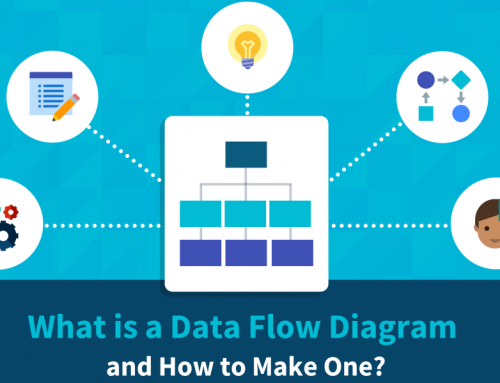6 Critical Components of Successful Data Governance
Good data and analytics governance enables faster, smarter decisions. Data and analytics leaders, including chief data officers, must ensure that their data and analytics assets are well-governed to achieve business strategy and corporate priorities. Well-handled data governance provides the insight necessary to make the best business decisions. All of these factors are critical to the success of data governance. In this article, we’ll cover 6 critical components of successful data governance.

Critical Components of Successful Data Governance
Critical Components of Successful Data Governance – 1. Development Strategic Goals
A data strategy is an important part of an enterprise’s development strategy. It is a plan to maintain and improve data quality, integrity, security, and access, and it is the highest principle that guides data governance. Whether data governance is consistent with enterprise development strategy is also an important criterion to measure whether the implementation of data governance system is mature and successful. It is necessary to establish a strategic culture of data governance under the framework of informatization development strategy, including the leadership’s emphasis on data governance, the resources that can be provided, the coordination ability of major issues, as well as a series of measures such as publicity and promotion of data governance, training and education.
Critical Components of Successful Data Governance – 2. Data Governance Organization
The organization of data governance includes institutional organization and service organization. Institutional organizations are mainly responsible for data governance and data management systems. These organizations are cross-functional, establishing data governance committees responsible for data governance discipline issues such as overall data strategy, data policy, and data management metrics. Establish a data governance committee composed of senior leaders, organize coordination across business departments, plan the overall direction of data governance, and set up a leading group office under it to implement data governance plans and supervise data management work. Different organizational levels should play different responsibilities and functions, and establishing a reasonable organizational level is conducive to quickly promoting the development of data governance.
Critical Components of Successful Data Governance – 3. Institutional Charter
A charter is a system of accountability that ensures the effective implementation of data governance, some of which are the responsibility of the data governance function, but also other data management functions.
- Rules and regulations. Data governance rules and regulations clarify the main objectives of data governance, relevant staff, responsibilities, decision rights, and metrics.
- Management and control method. The management and control method is based on the combination of rules and regulations and tools, and is a practical and operable method.
- Assessment mechanism. Assessment is the foundation for the implementation of the guarantee system. Establish a clear assessment system. In actual operation, according to the specific conditions of different banks, establish corresponding assessment methods for data governance and link them with individual performance.
- Standard specification. Technical specifications are the basis for ensuring the sustainable management of the data governance platform. With the growth of data volume and the development of technical levels, it is necessary to establish clear technical specifications for better and sustainable management and application of data assets.
Critical Components of Successful Data Governance – 4. Process Management
Process management includes process objectives, process tasks, and process classification. Establish corresponding processes according to the content of data governance and the rules and regulations of unit data governance.
- Take precautions beforehand. The implementation of the above mentioned strategic goals, rules and regulations is the best preventive measure.
- Strengthen on-the-spot monitoring. It should organize and analyze data quality problems, monitor and report data structure changes, data distribution, data satisfaction with business services, online data growth, data vacancies and quality deterioration. In addition to the protection of rules and regulations, these in-process monitoring processes also require reliable tools or platforms to analyze and avoid management out of thin air.
- Quality assessment and rectification. Regularly conduct comprehensive data governance status assessments on the system, establish evaluation indicators in terms of problem rate, resolution rate, and resolution timeliness, record and track data problems that need rectification through the system, and require rectification and optimization on schedule.
- It is necessary to integrate various methods for data governance. Data governance basically finds problems through systems or tools, and then technicians make batches of revisions, or business people make revisions or supplements. We should fully learn from the practice of Internet informatization, and confirm and supplement missing and wrong information through visits to important information.
Critical Components of Successful Data Governance – 5. Technology Application
Technology applications include tools and platforms that support core areas, such as data quality management systems, metadata management systems, etc. They are the technical guarantee that data governance can be carried out smoothly. Only by establishing a wealth of data governance tools and platforms can we effectively manage and manage data from various fields and effectively improve the value of data.
- Data asset management. Unified management of data assets, including metadata, data models, data standards, and other important data assets, and provide visual data query and display functions to support fast and convenient query.
- Data quality management. Implement the governance of data quality issues, and realize the full-process closed-loop management of data quality issue discovery, tracking, governance, and evaluation.
- Continuously enrich basic data. Continue to increase the breadth and depth of data accumulation and integration, build a unified data center to meet various needs, and continue to improve data mining, analysis and in-depth application capabilities.
- Interconnection. On the basis of establishing the above-mentioned supporting systems, it is also necessary to realize the interconnection, mutual coordination and verification among the various systems, and to provide data services with unified data and various forms.
Critical Components of Successful Data Governance – 6. Data Security
Through the adoption of various technical and management measures, the network system can operate normally, thereby ensuring the availability, integrity and confidentiality of network data. Therefore, the purpose of establishing network security protection measures is to ensure that the data transmitted and exchanged through the network will not be added, modified, lost or leaked.
Conclusion
Thank you for reading our article and we hope it can help you to have a better understanding of the 6 critical components of successful data governance. If you want to learn more about the data governance, we would like to advise you to visit Gudu SQLFlow for more information.
As one of the best data lineage tools available on the market today, Gudu SQLFlow can not only analyze SQL script files, obtain data lineage, and perform visual display, but also allow users to provide data lineage in CSV format and perform visual display. (Published by Ryan on Sep 10, 2022)
If you enjoy reading this, then, please explore our other articles below:



